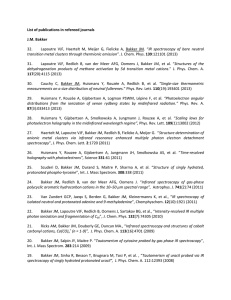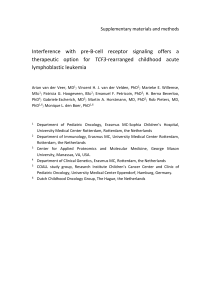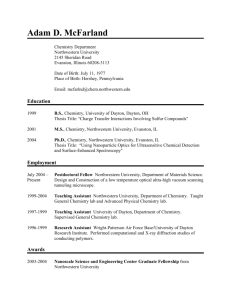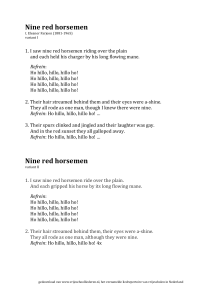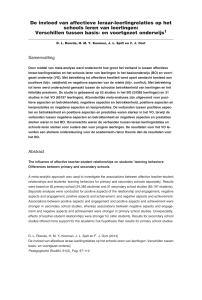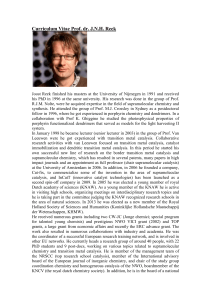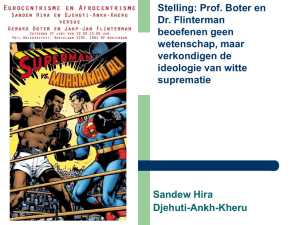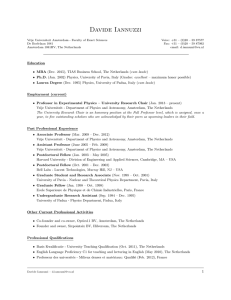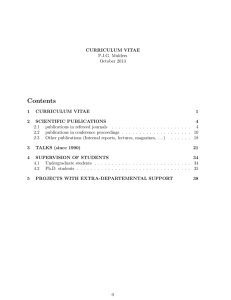Identification of catalyst surface species during asymmetric
advertisement
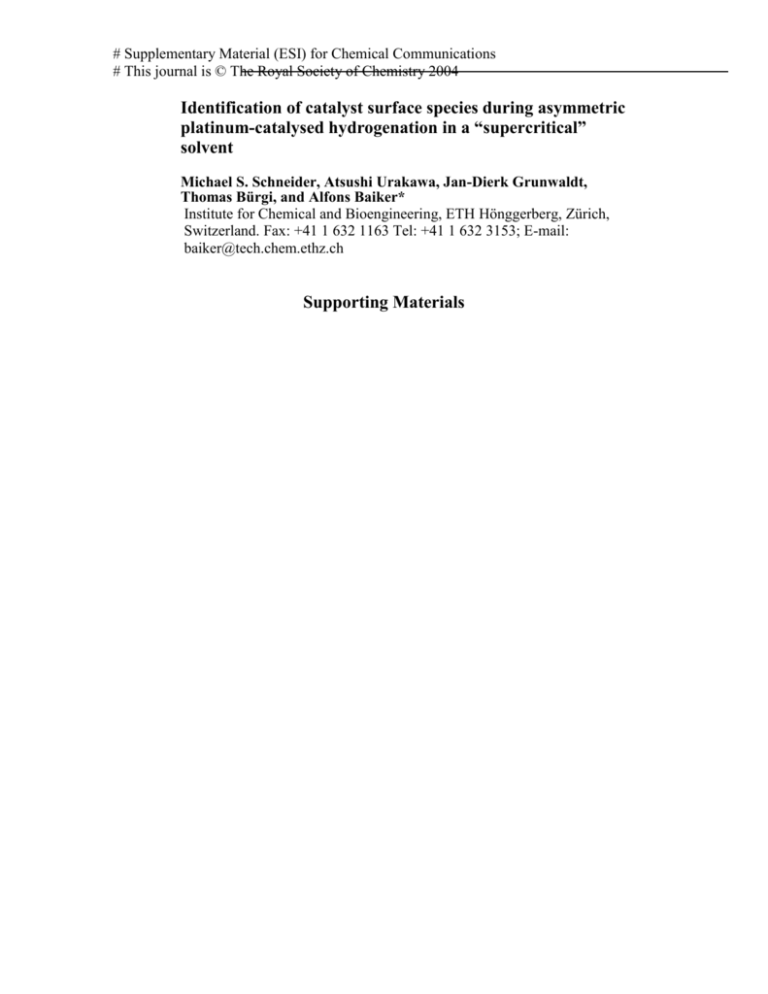
# Supplementary Material (ESI) for Chemical Communications # This journal is © The Royal Society of Chemistry 2004 Identification of catalyst surface species during asymmetric platinum-catalysed hydrogenation in a “supercritical” solvent Michael S. Schneider, Atsushi Urakawa, Jan-Dierk Grunwaldt, Thomas Bürgi, and Alfons Baiker* Institute for Chemical and Bioengineering, ETH Hönggerberg, Zürich, Switzerland. Fax: +41 1 632 1163 Tel: +41 1 632 3153; E-mail: baiker@tech.chem.ethz.ch Supporting Materials # Supplementary Material (ESI) for Chemical Communications # This journal is © The Royal Society of Chemistry 2004 Transmission spectra to monitor the reaction progress Figure 1 shows examples of transmission IR spectra taken during ethyl pyruvate (EP) hydrogenation in the in situ cell. Note the decreasing intensity of the band at 1302 cm–1 due to EP and the increasing intensity of the vibrations at 1221 and 1262 cm–1 originating Fig. 1 Transmission spectra taken during ethyl pyruvate hydrogenation in “supercritical” ethane at 40°C, 95 bar and a molar ratio EP:H2:ethane of 1:5:200. The spectra were taken at increasing reaction time (indicated by the arrows). The reference spectrum was taken with nitrogen. Measurement times after reaction start were (in min): 3, 9, 14, 23, 31, 42, 71, 110. from ethyl lactate. Model calculations for the band assignments The vibrational modes of cis/trans-ethyl pyruvate and cis/trans-ethyl lactate were assigned based on comparisons with model calculations. The geometry optimization and harmonic frequency calculations were carried out at B3PW91/cc-pVTZ level of theory [1-3] using GAUSSIAN 98 [4]. References 1. A.D. Becke, J. Chem. Phys., 98 (1993) 5648. 2. J.P. Perdew and Y. Wang, Phys. Rev. B, 45 (1992) 13244 3. T.H. Dunning Jr., J. Chem. Phys., 90 (1989) 1007 4. Gaussian 98, Revision A.7, M. J. Frisch, G. W. Trucks, H. B. Schlegel, G. E. Scuseria, M. A. Robb, J. R. Cheeseman, V. G. Zakrzewski, J. A. Montgomery, Jr., R. E. Stratmann, J. C. Burant, S. Dapprich, J. M. Millam, A. D. Daniels, K. N. Kudin, M. C. Strain, O. Farkas, J. Tomasi, V. Barone, M. Cossi, R. Cammi, B. Mennucci, C. Pomelli, C. Adamo, S. Clifford, J. Ochterski, G. A. Petersson, P. Y. Ayala, Q. Cui, K. Morokuma, D. K. Malick, A. D. Rabuck, K. Raghavachari, J. B. Foresman, J. Cioslowski, J. V. Ortiz, A. G. Baboul, # Supplementary Material (ESI) for Chemical Communications # This journal is © The Royal Society of Chemistry 2004 B. B. Stefanov, G. Liu, A. Liashenko, P. Piskorz, I. Komaromi, R. Gomperts, R. L. Martin, D. J. Fox, T. Keith, M. A. Al-Laham, C. Y. Peng, A. Nanayakkara, C. Gonzalez, M. Challacombe, P. M. W. Gill, B. Johnson, W. Chen, M. W. Wong, J. L. Andres, C. Gonzalez, M. Head-Gordon, E. S. Replogle, and J. A. Pople, Gaussian, Inc., Pittsburgh PA, 1998. Model calculations for EP adsorption on Pt clusters Cluster calculation for the determination of adsorption energies of cis and trans methyl pyruvate were performad using the Amsterdam Density Functional (ADF) program package [1]. A metal cluster of 19 platinum atoms was used. For all second row elements a 1s frozen core was used, while for platinum the core was frozen up to 4f. The core was modeled using relativistic pseudopotentials created with a fully relativistic Hamiltonian, and DFT X-alpha approximation. The main calculations were performed using a relativistic scalar approximation (mass-velocity and Darwin corrections) with Zero Order Regular Approximation (ZORA) method[2]. The basis set for ZORA formalism requires steep core-like functions, implemented in the program. Within this basis set double-zeta basis functions were used for platinum and double-zeta plus polarization functions were used for second row elements. The local part of the exchange and correlation functional was modeled using Vosko, Wilk, Nuisar parametrization of the electron gas [3]. The non local part of the functional was modeled using the Becke correction for the exchange [4] and the Perdew correction for the correlation [5]. Adsorption energies were calculated as follows: Ads-En = En(Cluster+Adsorbate) - En(Cluster) - En(FreeMolecule). The cluster was spin optimized in order to find the spin state with lowest energy. Calculations were run unrestricted, using a fixed pt-pt distance of 2.775 Angstrom (bulk metal) [6]. Three central atoms of the platinum cluster were set free to optimize together with the adsorbed molecule in order to partially simulate surface reconstruction. The calculations and their results are described in ref. [7], which is available from the authors on request. References: [1] Amsterdam Density Functional, Release 2002-01, Scientific Computing and Modelling NV - Vrije Universiteit; Theoretical Chemistry; Amsterdam. - E. J. Baerends, J. Autschbach, A. Berces, C. Bo, P. M. Boerrigter, L. Cavallo, D.P. Chong, L. Deng, R. M. Dickson, D. E. Ellis, L. Fan, T. H. Fischer, C. Fonseca Guerra, S. J. A. van Gisbergen, J. A. Groeneveld, O. V. Gritsenko, M. Gröning, F. E. Harris, P. van den Hoek, H. Jacobsen, G. van Kessel, F. Kootstra, E. van Lenthe, V. P. Osinga, S. Patchkovskii, P. H. T. Philipsen, D. Post, C. C. Pye, W. Ravenek, P. Ros, P. R. T. Schipper, G. Schreckenbach, J. G. Snijders, M. Sola, M. Swart, D. Swerhone, G. te Velde, P. Vernooijs, L. Versluis, O. Visser, E. van Wezenbeek, G. Wiesenekker, S. K. Wolff, T. K. Woo, and T. Ziegler # Supplementary Material (ESI) for Chemical Communications # This journal is © The Royal Society of Chemistry 2004 [2] E. van Lenthe, E.J. Baerends, J.G. Snijders, J. Chem. Phys. 99 (1993) 4597. E. van Lenthe, E.J. Baerends, J.G. Snijders, J. Chem. Phys. 101 (1994) 9783. E. van Lenthe, E.J. Baerends, J.G. Snijders, J. Chem. Phys. 105 (1996) 6505. E. van Lenthe, R. van Leeuwen, E.J. Baerends, J.G. Snijders, Int. J. Quantum Chem. 57 (1996) 281. E. van Lenthe, E.J. Baerends, J.G. Snijders, J. Chem. Phys. 110 (1999) 8943. [3] S.H. Vosko, L. Wilk, M. Nusair, Can. J. Phys. 58 (1980) 1200. [4] A.D. Becke, Phys. Rev. A 38 (1988) 3098 [5] J.P. Perdew, Phys. Rev. B 33 (1986) 8822. [6] G.A. Somorjai, in: Introduction to Surface Chemistry and Catalysis, Wiley: New York, 1994. [7] A. Vargas, T. Bürgi, A. Baiker, submitted for publication.
